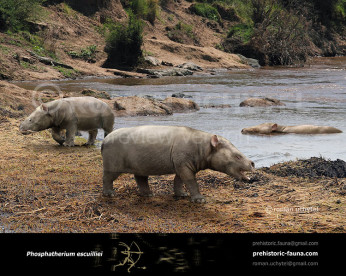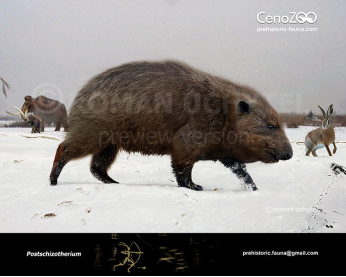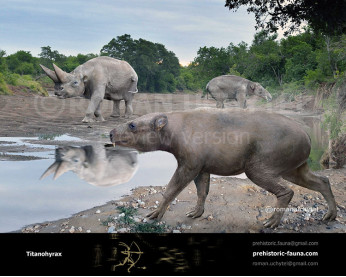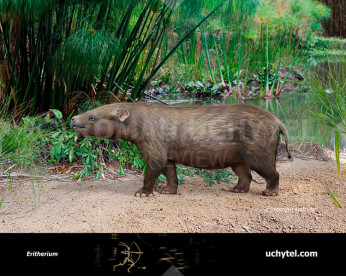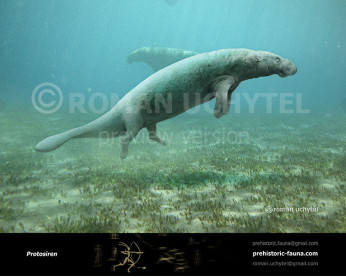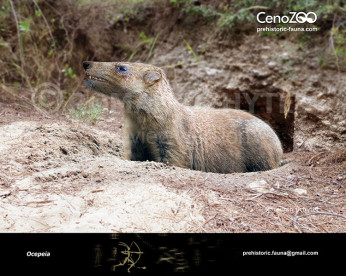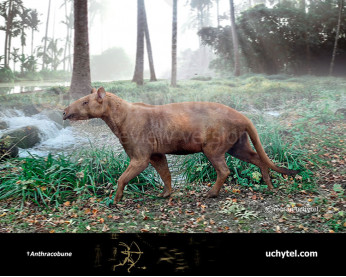Pliohyrax
2028720287Pliohyrax (†Pliohyrax (Osborn, 1899))
Order: Hyracoidea
Family: Pliohyracidae
Dimensions: length - 140 сm, height - 50-65 сm, weight ~ 20- 60 kg
Temporal range: Miocene–Pliocene of Europe, Central Asia and South Asia
Pliohyrax, is a extinct genus of hyracoids to sizes greatly exceeding those of any living hyrax, though it was by no means the largest member of this family. The hyracoids is a group of animals most closely related to elephants and manatees.
Fossils of this Miocene-Pliocene, scansorial herbivore have been found in Afghanistan, France, and Turkey. In Spain, Pliohyrax graecus is among the large mammals species found in the Almenara site.
As with many other hyraxes, the Pliohyrax was a social animal that lives in small herds led by a dominant male with the slightly larger tusk-like teeth.
Pliohyrax (†Pliohyrax (Osborn, 1899))
Order: Hyracoidea
Family: Pliohyracidae
Dimensions: length - 140 сm, height - 50-65 сm, weight ~ 20- 60 kg
Temporal range: Miocene–Pliocene of Europe, Central Asia and South Asia
Pliohyrax, is a extinct genus of hyracoids to sizes greatly exceeding those of any living hyrax, though it was by no means the largest member of this family. The hyracoids is a group of animals most closely related to elephants and manatees.
Fossils of this Miocene-Pliocene, scansorial herbivore have been found in Afghanistan, France, and Turkey. In Spain, Pliohyrax graecus is among the large mammals species found in the Almenara site.
As with many other hyraxes, the Pliohyrax was a social animal that lives in small herds led by a dominant male with the slightly larger tusk-like teeth.

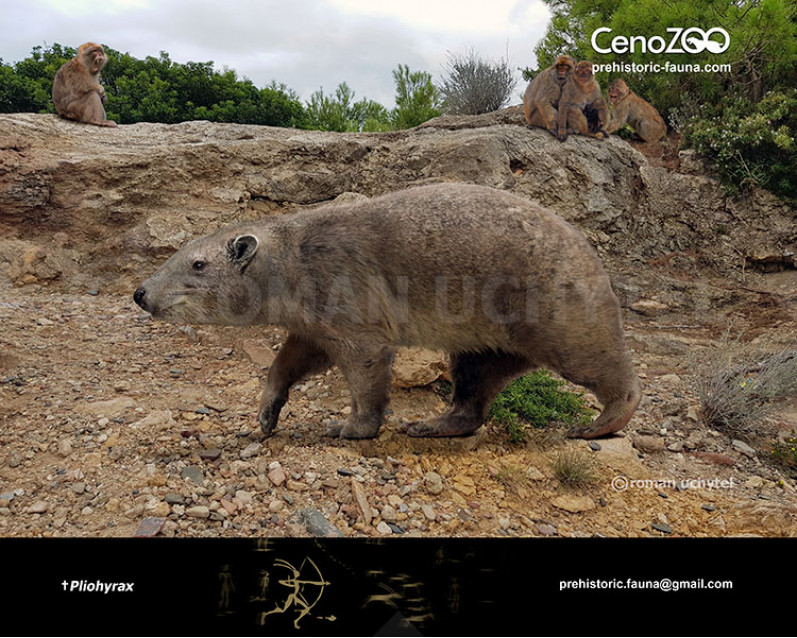
-797x638.jpg)

-70x56.jpg)
-346x277.jpg)
